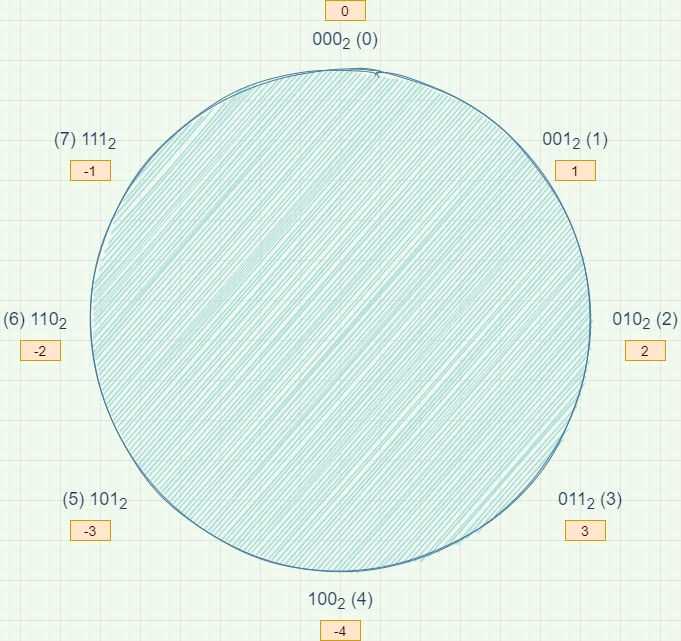Why does two's complement work?
⊷ 2 min readYou probably know that most computers represent negative numbers by taking the two's complement of the corresponding positive number. This allows them to easily do subtraction by addition. You may also know that to find the two's complement of a binary number, all you need to do is flip the bits and add 1 to the result.
If this seems like magic to you and you wonder why it works, read on.
Modular arithmetic
One crucial thing to establish is that we're effectively dealing with modular arithmetic a.k.a. "clock arithmetic".
- Assume we've got only 3 bits to work with. In 3 bits we can represent 23 = 8 numbers, e.g. the numbers from 0 to 7 (0002 to 1112).
- Let's say we want to represent an equal amount of negative and non-negative numbers in those 3 bits. That gives us the numbers from 0 to 3, and from -4 to -1, all mapped onto what were previously the numbers from 0 to 7 (0002 to 1112).
Since we've only got 3 bits to work with, looking at the diagram we can see that adding a multiple of 8 "around the clock" will get us back to the position we started from. We can generalize this for n bits - we will get back to the starting position after adding a multiple of 2n
It becomes quite clear that subtracting 1 is the same as adding 7, subtracting 2 is the same as adding 6, and so on.
With this mapping it also works out perfectly that adding a number to its negative gives us zero.
In decimal:
2 + -2 = 2 + 6 = 8 = 0; // 8 mod 8 = 0In binary:
010 + 110 = 1000 = 000; // we only have space for 3 bits, so the 1 gets droppedWhy flipping the bits and adding one gives us the 2's complement?
Using the same scenario as above, how can we find the number -3 if we don't know the algorithm? Simple - we subtract 3 from 0, which is the same as substracting 3 from 8 (remember that every multiple of 8 gives us 0). Here is what this would look like in binary:
1000 - 011 = 1 + (111 - 011) = 1 + 100 = 101;10002 is the same as 12 + 1112.
You should also notice that subtracting a number from 1112 is the same as flipping the bits of that number.
8-bit example
Let's look at an 8-bit example. We want to find the negative of 72 (010010002). This time our "clock" goes to zero every 28 = 256 times, so we need to subtract 72 from 256.
100000000 - 01001000 =
= 1 + (11111111 - 01001000) =
= 1 + 10110111 = 10111000And that's it.
